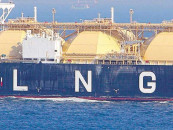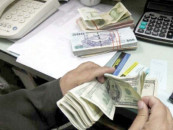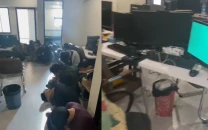Breaking free from inertia
Pakistan finds itself unable to prosper

Pakistan once stood at the edge of promise - a young nation alive with ambition, industry, and the dream of joining Asia's rising tigers. But somewhere along the way, that energy dimmed. Growth lost its rhythm, and progress began to circle instead of climb. The country now finds itself caught in what economists call the Middle-Income Trap — a place where nations rise above abject poverty but fail to reach prosperity. In this zone, costs rise faster than productivity, innovation stalls, and ambition outpaces capacity. Pakistan, once a symbol of potential, risks becoming an example of inertia — not poor enough for aid, yet not strong enough to compete.
The trap captures countries that grow through low-wage manufacturing and basic exports but stumble when wages rise, and productivity fails to keep pace. Argentina, Brazil and Thailand have struggled in this space for decades. Pakistan's case is similar: an economy that moves, but no longer moves forward.
Take exports. Pakistan's total exports stood around $32 billion, barely changed in years. By contrast, Vietnam's exports crossed $354 billion, despite both economies starting at similar levels two decades ago. While Bangladesh and Vietnam diversified into electronics, garments and machinery, Pakistan remains locked into low-value textiles and primary commodities. Its inability to upgrade the export base has kept the external sector stagnant and vulnerable.
Human capital tells a similar story. Pakistan spends barely 1.5 per cent of GDP on education - among the lowest in Asia. Millions of children remain out of school, and even university graduates often lack market-relevant skills. Without investment in people, productivity cannot grow - and without productivity, prosperity cannot follow.
Institutional fragility compounds the problem. Every few years, the cycle repeats - IMF bailouts, currency shocks and short-term fiscal fixes. Political volatility and administrative discontinuity have turned policymaking into crisis management. Investors, both domestic and foreign, hesitate in such an environment. High interest rates, arbitrary taxation and poor contract enforcement have produced what might be called a "fear economy" - one where capital hides instead of builds, and risk-taking gives way to risk-avoidance.
Meanwhile, the informal sector dominates. More than 70 per cent of Pakistan's workforce operates outside formal structures - underpaid, unprotected and untaxed. This keeps productivity low and deprives the state of much-needed revenue. Weak public investment in infrastructure and services then reinforces the cycle of low growth and inequality.
But the most subtle trap is psychological. A comfortable middle class has learned to live with stagnation. Malls expand, cars multiply and consumption thrives, but innovation languishes. Too many seek safety in government jobs or overseas remittances, while too few take the risks that fuel enterprise. It is this quiet acceptance of "just enough" that makes inertia so powerful - and so dangerous.
History, however, offers a way out. South Korea in the 1960s was poorer than Pakistan but climbed out of poverty through export discipline, industrial upgrading and massive investment in education. China transformed from low-end assembly to global technology leadership through long-term planning and institutional focus. Malaysia avoided the trap by building a diversified, knowledge-based economy anchored in policy continuity and political stability. None of these transitions happened overnight; each demanded decades of consistent reform and national purpose.
For Pakistan, breaking free from inertia requires a similar commitment - not cosmetic fixes, but foundational change.
First, invest in people. Raise education and skills spending to at least 45 per cent of GDP. Focus on digital literacy, STEM education and vocational training through public-private partnerships that connect learning with livelihoods.
Second, reform the tax system. Agriculture, real estate and retail must enter the tax net. Simplify compliance through technology and transparency, broaden the base, and reduce distortions that punish the formal sector.
Third, empower cities. Urban centres generate nearly 80 per cent of GDP yet remain fiscally suffocated. Devolving authority to local governments, simplifying business licensing, and expanding microfinance - especially for women - can unleash immense productive potential.
Fourth, separate economic governance from political turbulence. The National Economic Council should guide long-term policy insulated from election cycles, ensuring continuity and coherence.
Fifth, engage the diaspora as partners, not just remitters. Pakistan's nine million overseas citizens can drive entrepreneurship, investment and technology transfer - injecting new ideas and capital into the economy.
Finally, open markets and ensure fair competition. Decades of protectionism and rent-seeking have entrenched inefficiency. Phasing out distortive subsidies, arbitrary tariffs and discretionary powers would reward productivity and innovation rather than privilege and influence.
Breaking free from inertia is more than an economic task - it is a national awakening. It means replacing short-term fixes with long-term vision, dependency with creativity, and fear with confidence. Pakistan cannot grow by surviving; it must thrive by transforming.
The choice is simple yet profound: remain comfortable in stagnation or embrace the hard climb toward renewal. The Middle-Income Trap is not an inevitability; it's a choice: to reform or to resign to mediocrity. The real trap isn't income; it's inertia. And only courage, consistency and commitment can break it.
The next generation of Pakistanis deserves more than survival. They deserve momentum - born of bold, consistent action, and the courage to leap forward rather than limp in circles.
The writer is the Vice Chancellor of the Pakistan Institute of Development Economics (PIDE) and Member at Planning Commission of Pakistan















COMMENTS (4)
Comments are moderated and generally will be posted if they are on-topic and not abusive.
For more information, please see our Comments FAQ